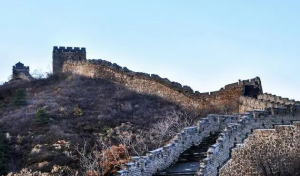How high is the Great Wall of China?
Introduce: The Great Wall is a huge wall built in ancient China to prevent the attack of northern nomads. The Great Wall stretches from the sea in the east to the desert in the west, a total of 6,700 kilometers long, so people also call it the Great Wall. But, you know what? The Great Wall is only 7.8 meters high. What exactly does it stop? What would China be without the Great Wall?
The construction of the Great Wall began a long time ago, when China was not unified and there were many small countries fighting. At the same time, nomads from the north often came to seize livestock and land. To protect themselves, nations built great walls along their borders. Although these walls are not too high, they can play a certain role in blocking and warning.
Later, there was a state called Qin. It was so strong that it defeated all the other states and unified China. The emperor of Qin was called Qin Shi Huang. He wanted to expand his territory and power, so he sent a general named Meng Tian with 300,000 men to fight the nomads in the north. They won many battles and connected the old walls built by various countries. They built a very long wall from Lintao in the west to Liaodong in the east.

This is the first time in history that a national Great Wall has been built, and it is also the largest and most far-reaching one. The Great Wall of Qin not only effectively prevented the attack and harassment of the northern nomads, but also ensured the safety and happiness of the Chinese people, and also reflected Qin Shi Huang’s firm belief in the unification and centralization of China and great talent and strategy.
The Qin Dynasty did not last long and was replaced by the Han Dynasty. The Han Dynasty continued to build the Great Wall. The Han Dynasty had an emperor named Emperor Wudi, who also wanted to expand his territory and power, as well as trade and cultural exchanges. On the northern border, he built a border wall stretching nearly 10,000 kilometers from the city of Dayuan II in the west (in present-day Uzbekistan) to the north bank of the Amur in the east (in present-day Russia). The Great Wall of Han not only protected the territory and security of the Han Dynasty, but also promoted economic and cultural exchanges and ethnic integration in the regions along the ancient Silk Road.

During the Sui and Tang Dynasties (581-907 AD), the nomads in the north had been pacified or assimilated, and the military role of the Great Wall gradually diminished, and no large-scale construction was carried out. In the Song and Yuan Dynasties (960 AD – 1368 AD), the Song Dynasty ceded sixteen prefectures of Yanyun, making the Great Wall no longer defensive. The rulers of the Yuan Dynasty were Mongols, and they did not pay attention to the construction of the Great Wall, but only repaired some passes, which served as a function of checking passers-by and post stations.
The Ming Dynasty (1368-1644 AD), the last period of construction of the Great Wall, is also the largest and best preserved section. In the early Ming Dynasty, in order to defend against the invasion of northern ethnic groups such as Tatars and Vassines, from Hongwu to Wanli, after 20 large-scale construction, a border wall with a total length of 6,350 kilometers was built from Jiayuguan Pass in Gansu Province in the west to Hushan Mountain in Liaodong in the east.
The Ming Great Wall was built along the highest point of the mountains, using the terrain to create dangerous passes, and distributed with hundreds of heroic passes, thousands of enemy stations, and thousands of beacon towers, forming a complete military defense system. The Ming Great Wall not only played an important role in the military, but also demonstrated the wisdom and creativity of the Chinese nation in architectural technology, artistic aesthetics, cultural inheritance and other aspects.

Therefore, the Great Wall not only stopped the invasion and threat of foreign enemies, but also China’s adherence to and pursuit of its own destiny and national unity. Without the Great Wall, China might have been divided and conquered by the northern nomads, the Central Plains culture might have been destroyed and died out, and the Chinese nation might have lost its own characteristics and spirit. It can be said that the Great Wall is the witness and protector of Chinese history and culture, and the symbol and pride of the Chinese nation.